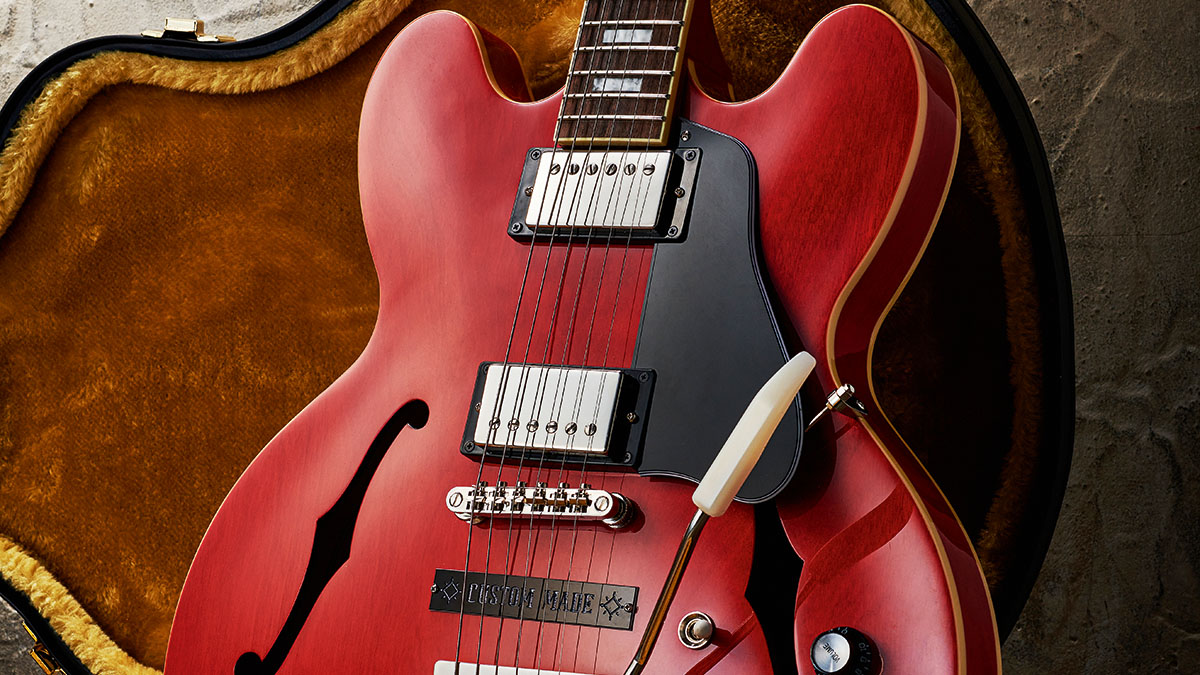Guitar World Verdict
While $1,299 is hardly pocket change, this new release is a very nicely detailed piece, but it’s the sound, playability and tuning stability – the things that really matter – that make it very credible. We’d rock this one any day of the week.
Pros
- +
Very good build.
- +
Versatile sounds from the Gibson Burstbuckers.
Cons
- -
Fret tops could do with a little more smoothing.
- -
It’s no lightweight.
You can trust Guitar World
According to Epiphone, the story goes that in 1996 Joe Bonamassa bought a ’62 Gibson ES-335 that he used on his debut album, A New Day Yesterday.
In 2001, he sold the electric guitar to help finance his move from New York to Los Angeles, and then, nearly 20 years after that first record, an unexpected phone call led to a reunion with his ol’ thinline.
This new 2022 Epiphone limited tribute shows no signs of 60 years of use; its vibrant red finish is brand-new shiny just like the hardware, not least the long Maestro Vibrola and the pickup covers.
You can clearly see the plain maple facings of the back, front and sides through the finish, while the neck is spec’d as one-piece mahogany (which appears quarter-sawn) and the ’board swaps from classic Indian rosewood to Indian laurel (which is increasingly used by similar offshore brands, including Gretsch).
The cream edge-binding around the body is cleanly scraped, as is the fingerboard binding, and fretting is good – the fret ends sit over the binding, subtly increasing the playable width. Other visible details, such as the f-holes, are nicely done with a clean black painted edge. It’s a tidy piece.
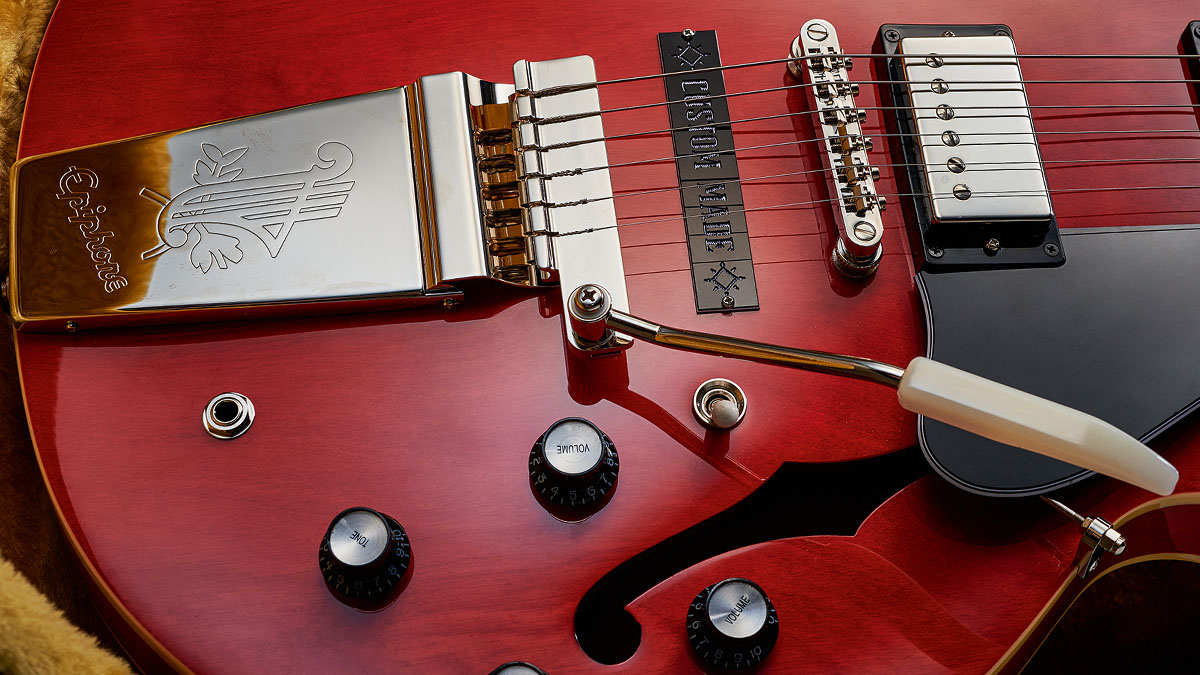
Yet this ES-335 is considerably more expensive than the standard non-vibrato model, which lists at $599. So what extras are we getting? Part of the cost is the Gibson USA Burstbuckers, with a 3 at the bridge and a 2 at the neck.
Pots are by CTS and the tone caps by Mallory (.022 microfarads), and you can see through the f-hole that the toggle-switch pickup-selector is Switchcraft (and you’ll spy neatly kerfed linings too).
Part of the cost is the Gibson USA Burstbuckers, pots by CTS, tone caps by Mallory and a Switchcraft pickup selector
The hardware might be a touch generic in comparison, but neither the wired tune-o-matic with its easy-to-adjust slot-head posts nor the Kluson-style tuners caused us any problems. Another upgrade, of course, is that Vibrola, and while the ‘Custom Made’ plaque (originally used to cover the holes for the stud tailpiece, though there are none of those here) might not fool a vintage expert, it’s cut in a similar style.
We then get a sturdy ‘Bonamassa Nerdville, CA’ logo’d case and case candy that includes the story of the guitar and a photo of Joe in a small booklet. Here ends the defence.
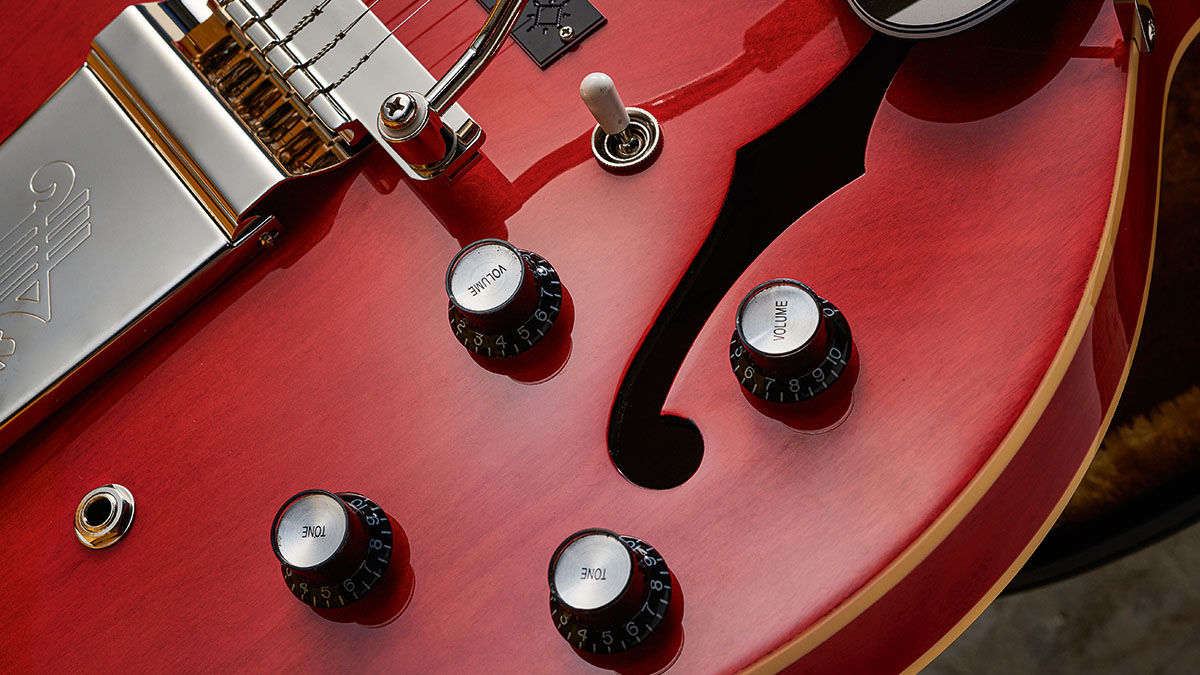
Feel & Sounds
At 3.96kg (8.71lb), this guitar is no featherweight – heavier than the 3.55kg Gibson Jim James ES-335 and only slightly lighter than the 4kg Gibson Custom Shop Lucille Legacy we’ve most recently evaluated.
The chunky feel continues with the neck profile, classed as a ‘rounded C’ with quite full shoulders. At 21.3mm at the 1st fret and 24.6mm at the 12th it’s a little deeper than that Jim James and virtually identical to the Custom Shop Lucille.
It’s not quite as full as Gibson’s slightly bigger ‘50s profile, but certainly feels fuller in the hand than the thinner ‘60s SlimTaper. The Vibrola, of course, is only designed for a light waggle and the arm does sit quite high from the body, but with zero TLC the overall tuning stability is really good and there’s minimal neck flex.
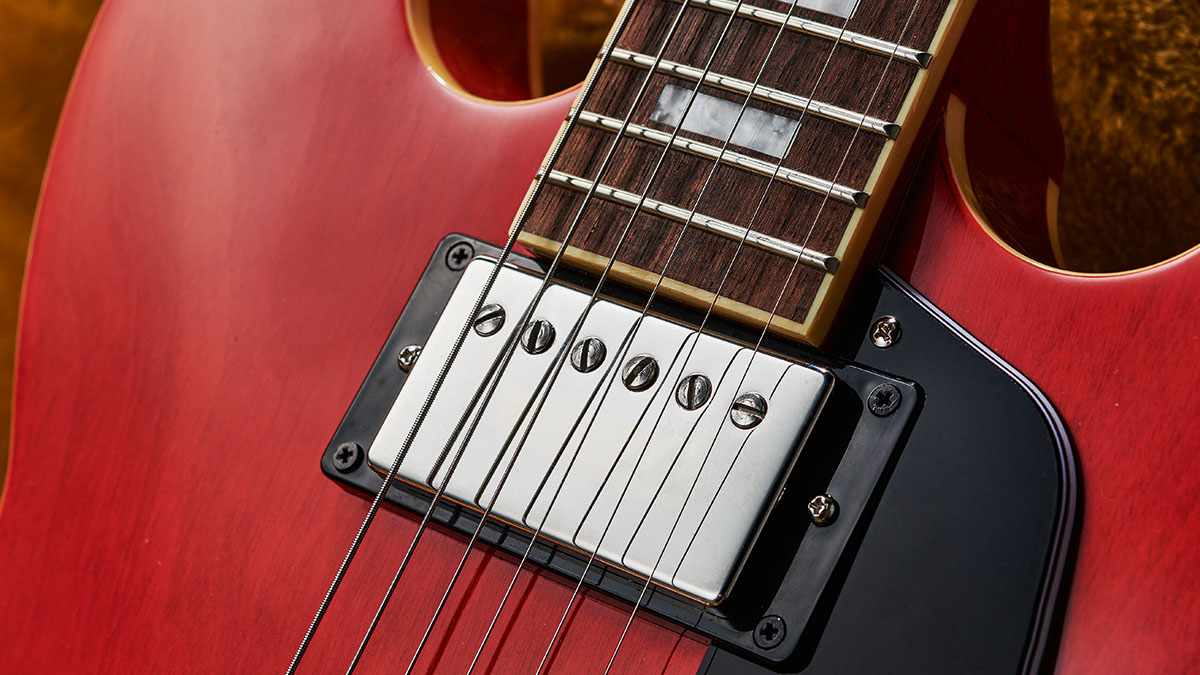
It’s nicely set up, too. To be honest, we’re looking for faults and struggling to find any. There’s a vibrant and engaging acoustic response, too. There’s gotta be a catch? Well, if there is, it’s not in the sound department.
As one reference, we plugged in our Gibson Les Paul Classic with its retrofitted Burstbuckers 1 at the neck and 2 at the bridge, and the Epi holds its own. The bridge pickup here is slightly less thin and the neck nicely balanced; both really nail classic blues-rock for which, frankly, this guitar seems tailor-made. But it’s certainly not all about bluster.
Both pickups clean up well, or suit a cleaner guitar amp where, as ever, a good ES-335 seems to cover most bases. We A/B’d it against some other instruments that cost twice and three times as much, and we still couldn’t find the catch.
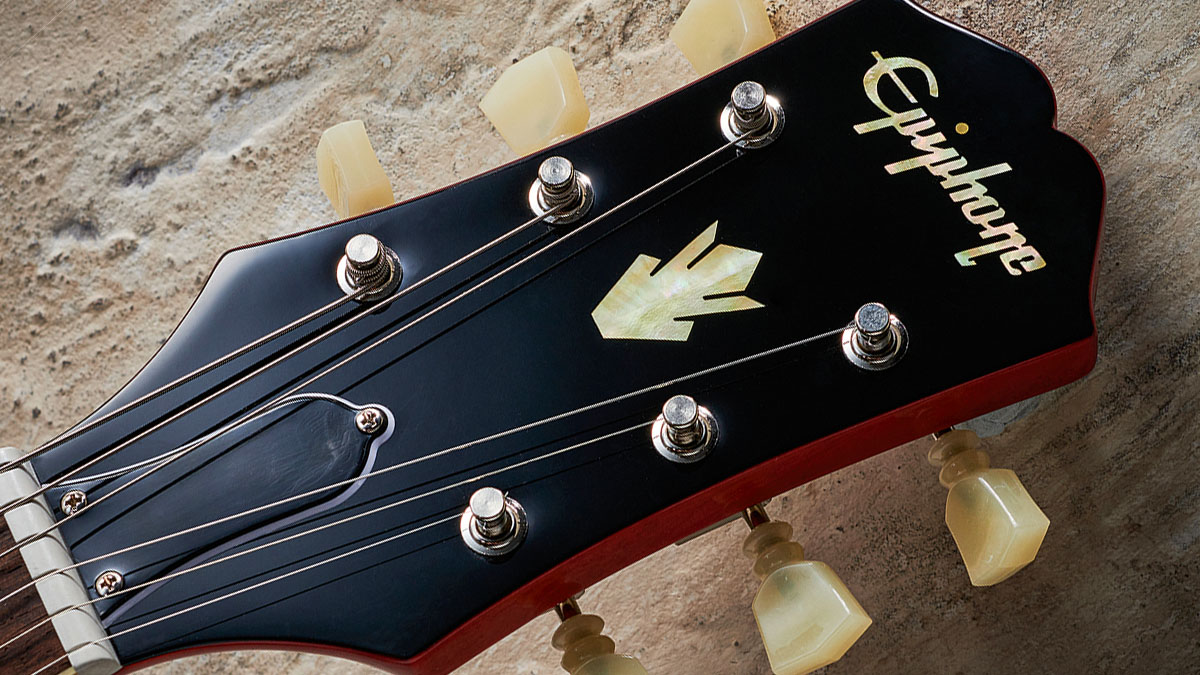
Specs
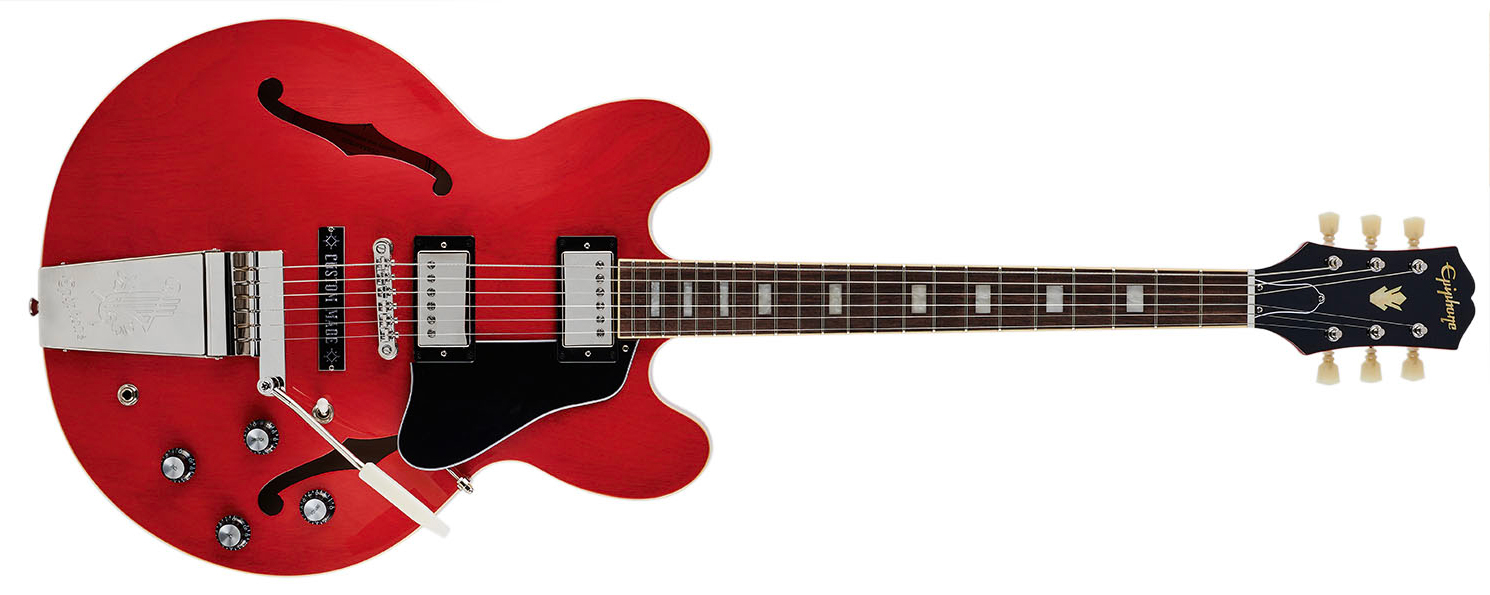
- PRICE: $1,299 / £1,149 (inc case)
- ORIGIN: China
- TYPE: Double-cutaway, semi-solid electric
- BODY: 5-ply layered maple; solid maple centre block
- NECK: 1-piece mahogany, ‘rounded C’ profile, glued-in
- SCALE LENGTH: 628mm (24.75”)
- NUT/WIDTH: Graph Tech NuBone/43.3mm
- FINGERBOARD: Bound Indian laurel, pearloid small block markers, 305mm (12”) radius
- FRETS: 22, medium jumbo
- HARDWARE: Epiphone LockTone tune-o-matic bridge, Maestro Vibrola, Epiphone Deluxe tuners w/ double ring buttons nickel-plated
- STRING SPACING, BRIDGE: 51.5mm
- ELECTRICS: Gibson Burstbucker 3 (bridge) and Burstbucker 2 (neck) humbuckers, 3-way toggle pickup selector, 2x volumes, 2x tones (CTS pots/Mallory capacitors)
- WEIGHT (kg/lb): 3.96/8.71
- OPTIONS: No
- LEFT-HANDERS: No
- FINISH: Sixties Cherry – all gloss
- CONTACT: Epiphone

Dave Burrluck is one of the world’s most experienced guitar journalists, who started writing back in the '80s for International Musician and Recording World, co-founded The Guitar Magazine and has been the Gear Reviews Editor of Guitarist magazine for the past two decades. Along the way, Dave has been the sole author of The PRS Guitar Book and The Player's Guide to Guitar Maintenance as well as contributing to numerous other books on the electric guitar. Dave is an active gigging and recording musician and still finds time to make, repair and mod guitars, not least for Guitarist’s The Mod Squad.
“This would make for the perfect first guitar for any style of player whether they’re trying to imitate John Mayer or John Petrucci”: Mooer MSC10 Pro review
“The most in-demand mods straight from the factory”: Fender’s elevated Player II Modified line brings the firm’s most sought-after guitar upgrades to the masses
